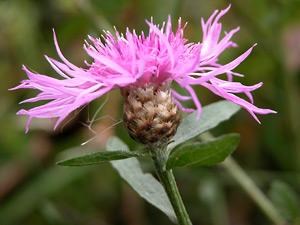Powell River’s local governments have made contributions to the Coastal Invasive Plant Committee (CIPC).
City of Powell River council voted on April 21 to give the non-profit society $2,500. The Powell River Regional District (PRRD) board voted on April 28 to also contribute $2,500 to the organization. The funds will be used for its proposed 2011 inventory and treatment work plan.
CIPC serves Vancouver Island, the Gulf Islands and the upper and lower Sunshine Coast, as well as areas of the Mount Waddington and Strathcona regional districts on the mainland. Its mandate is to educate community members and land managers about the impacts of invasive plants, promote cross-jurisdictional coordination and integrated invasive plant management, and assist land managers with their invasive plant management objectives. Dave Murphy, PRRD Texada Island director, is a CIPC director.
Ernie Sellentin, CIPC project coordinator, made presentations to the regional district and city at committee meetings in February and March. He talked about the occurrence of invasive plants in the area, as well as in BC. Invasive plants are non-native, have no natural predators, establish quickly and are competitive.
Consequences of invasive species infestations include the potential destruction of native plant species, potential harm to grazing animals, reduced crop yields and quality, contamination to commercial trade products and poor forest regeneration. As well, they reduce property values, alter ecosystems and create an increased wildfire hazard.
They also affect human health by causing skin irritation, blisters, scarring and severe breathing problems.
The cost of doing nothing about invasive plants will rise from $65 million in 2008 to $139 million in 2020, Sellentin said. He stressed the need for a coordinated strategy among various agencies to eradicate the problem, and the importance of public education.
CIPC partners on the Sunshine Coast include the ministry of transportation and infrastructure, BC Hydro and Fortis BC.
Powell River funds will go toward management activities in the region. For example, there are tansy ragwort sites, on Texada Island, that are adjacent to high value agricultural lands. As well, giant hogweed and Japanese knotweed sites treated by CIPC crews in 2010 need to be re-treated, as well as new or untreated sites. Crews will also remove butterfly bushes which are growing along roadsides and next to waterways and gorse, Scotch broom and English ivy in high value natural areas.
On April 29, the provincial government announced it was funding the Invasive Plant Council of BC with $3 million to create a new employment program, called Take Action, that will train and hire up to 150 people to help prevent and reduce the spread of invasive plants around the province.
With the funding, the council will work with the province’s 12 regional weed committees to place local, multi-person teams around BC. The teams will be trained to undertake work identified as critical and specific to their local area.
“The term ‘invasive plant’ may sound like something from outer space or something that doesn’t impact people,” said Steve Thomson, minister of forests, lands and natural resource operations, in a statement. “But, invasive plants negatively affect rangelands, forests, recreation opportunities and water quality and quantity. This funding will help reduce the spread and impact of invasive plants while providing jobs around the province.”



